Best of India Tours
- Golden Triangle Tour- Best of India & Nepal
- Classical Rajasthan
India Cultural Tours
- Images of North India- Karnataka Heritage
- Rajasthan & Goa Tour
Discover India Tours
- Grand India Tour- North to South India
- Central to South India
Rajasthan Tours
- Classical Rajasthan Tour- Golden Triangle Tour
- Grand Mughal Tour
India Luxury Trains
- Palace on Wheels- The Golden Chariot
- India Deccan Odyssey
- The Indian Maharaja
- Royal Rajasthan on Wheels
Nepal Tours
- Glimpses of Nepal- Buddhist Pilgrimage
- Nepal River Rafting
- Destinations of Nepal
- Nepal General Info
India Wildlife Tours
- North India Wild Life- South India Wildlife
Tibet Tours
- Tibet Monastery Tours- Explore Tibet
- Destinations of Tibet
Spa & Yoga Tours
- Ananda in Himalayas- Yoga & Meditation
Adventure Tours
- Manali Safari Tour- Himalayan Trekking
- Horse Safari
Vadodara
Ahmedabad
![]() Bhavnagar
Bhavnagar
![]() Bhuj
Bhuj
![]() Daman
Daman
![]() Diu
Diu
![]() Gondal
Gondal
![]() Jamnagar
Jamnagar
![]() Sasan Gir
Sasan Gir
![]() Vadodara
Vadodara
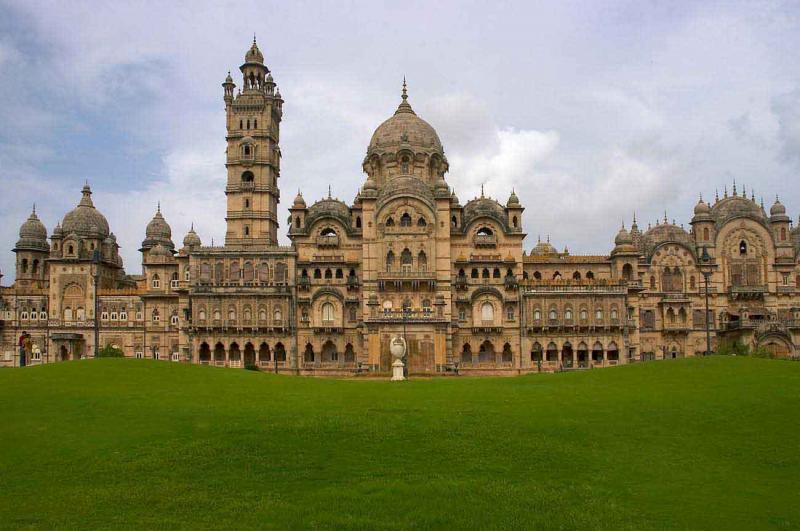
Modern Baroda is a great and fitting memorial to its late ruler, Sayaji Rao Gaekwad III (1875-1939 AD). It was the dream of this able administrator to make Baroda an educational, industrial and commercial centre and he ensured that his dream would come true. Baroda is situated on the banks of the river Vishwamitri (whose name is derived from the great saint Rishi Vishwamitra). The city was once called Chandravati, after its ruler Raja Chandan, then Viravati, the abode of the brave, and then Vadpatra because of the abundance of banyan trees on the banks of the Vishwamitri. From Vadpatra it derived its present name Baroda or Vadodara.
Baroda has a rich historical background. The ardent historian can trace Baroda’s history over 2000 years and more. However, the recent threads can be picked up when the Moghul rule over the city came to an end in 1732, when Pilaji brought the Maratha activities in Southern Gujarat to a head and captured it. Except for a short break, Baroda continued to be in the hands of the Gaekwads from 1734 to 1949.
Sightseeing
Baroda offers various sightseeing options, the sightseeing includes Baroda Museum and Picture Gallery which has impressive collections of art and archeology, natural history, geology and ethnology. Also visit Durbar Hall in Laxmi Vilas Palace, was the court room of the Gaekwads. Also visit EME Temple which is a geodesic structure covered with aluminium sheets. Visit Laxmi Vilas Palace, contains a collection of old armour as well as bronze and marble sculptures. Visit Sayajibag which contains Museum of Health & Hygiene and a picture gallery.
Excursions
In excursions visit Kayavarohan where you will find a beautiful Shiv Temple built recently houses an attractive idol of Lakulish. Also visit Pavagarh, where you will find Juma Masjid and Shaha-ki-Masjid. Also visit Rajpipla which is famous for many a palaces and a majestic fort. Also visit Shukaltirth, which is famous for its Vishnu Temple.
Excursions for Vadodara
Baroda Museum & Picture Gallery
Founded by the Gaekwad in 1894, it has impressive collections of art and archeology, natural history, geology and ethnology. The adjoining art gallery has great collection of European old masters, Veronese, Giordano, Zurbaran, some Flemish and Dutch school paintings, Turner adn Constable, a collection of Mughal miniatures and valuable palm-leaf manuscripts of Buddhist and Jain origin. It has an excellent collection of art objects and paintings, including the famous Akota bronzes dating from 5th Century A.D. Other treasures include a full-fledged gallery of Tibetan Art. Visit Maqbara, which is the oldest Mughal monument in the town.
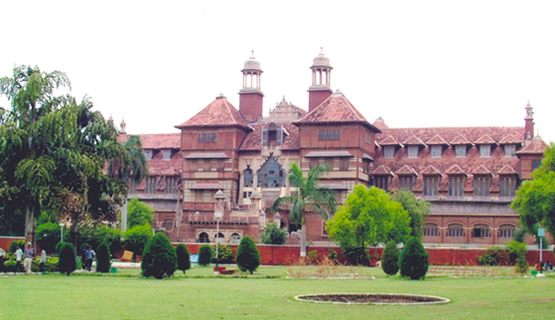
Darbar Hall
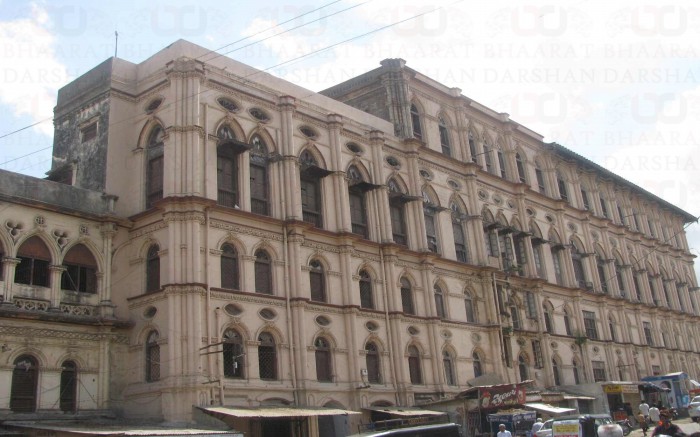
The Darbar Hall in Laxmi Vilas Palace, was the court room of the Gaekwads. Here musicians performed and entertained the royal family. The beautiful jharokhas, the magnificent chandeliers and the intricate work on the glass windows enhance the beauty of the hall. Even today classical music concerts are held here.
Eme Temple
Unique in concept and design, the EME Temple is a geodesic structure covered with aluminium sheets. Run entirely by the army authorities, this temple is a major attraction for both tourist and devotees.
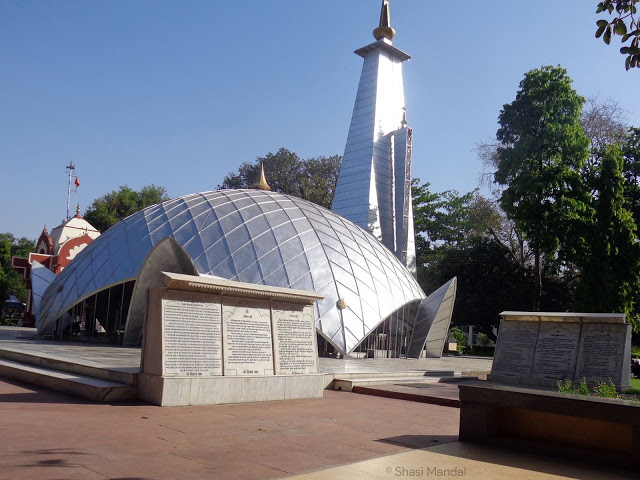
Laxmi Vilas Palace

It is designed in Indo-Saracenic style and was built by Maharaja Sayajirao III. Started in 1878 and completed in 1890, it is the residence of the royal family. The palace contains a collection of old armour as well as bronze and marble sculptures. Fatehsinh Rao Museum, located on the palace grounds, houses the royal collection of paintings, sculptures and other objects of arts
Maqbara
Built around 1586, the tomb of Qutbuddin (the army general of the great king Akbar) has beautiful windows carved in stone; there is an old step-well in the large grounds surrounding it. It is one of the oldest Moghul monuments of the city.
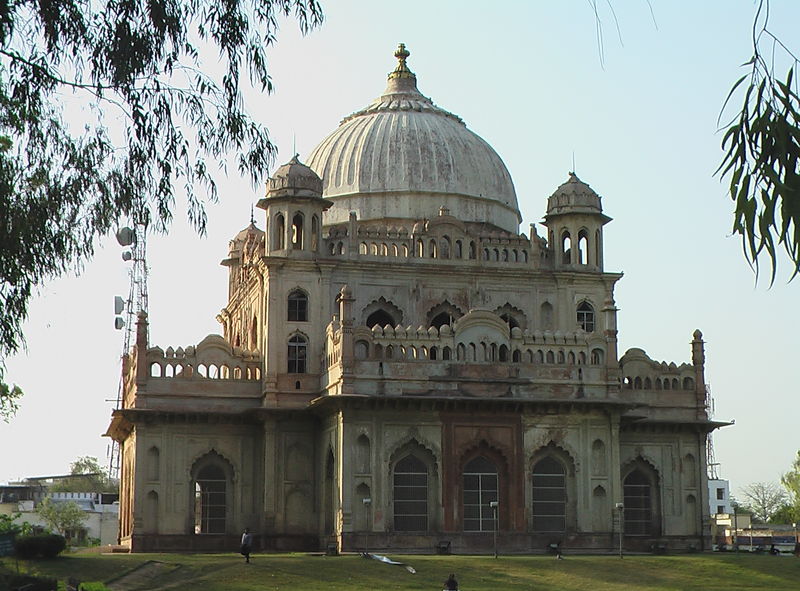
Sayajibag
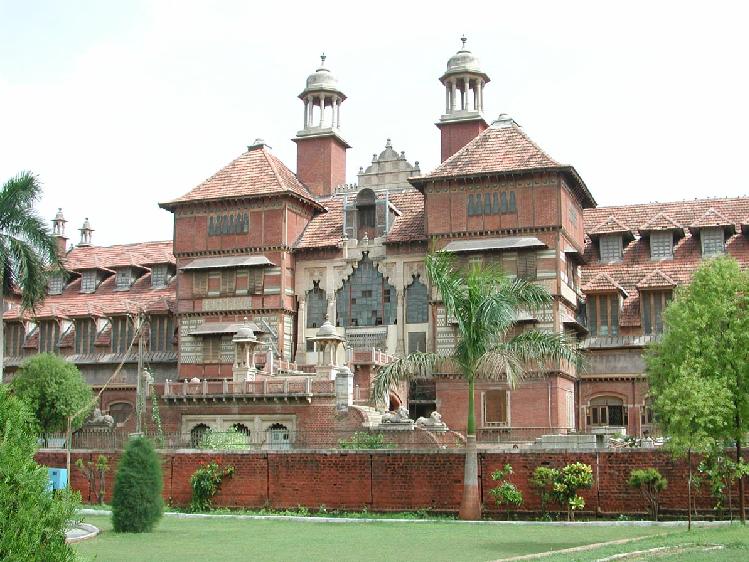
Sayaji Baug (the famous park) is situated on river Vishwamitri and was built by Sayajirao III in 1879. Sprawling over 113 acres, it also includes an excellent zoo, the Baroda Museum and Picture Gallery, the Museum of Health and Hygiene and the Sardar Patel Planetarium. A major attraction for children is the 3.5 kms joy ride through the park on the toy train .
Sayaji Sarovar
The Sayaji Sarovar or Ajwa lake, 22 kms away from the city is the principal source of water. It is formed by damming the Surya river and Vaghali Nala. Work on the scheme was started in 1885 and was completed in 1890. The gardens at Ajwa are patterned after the famous Brindavan Gardens of Mysore. The illumination of fountains is a major attraction for tourists.
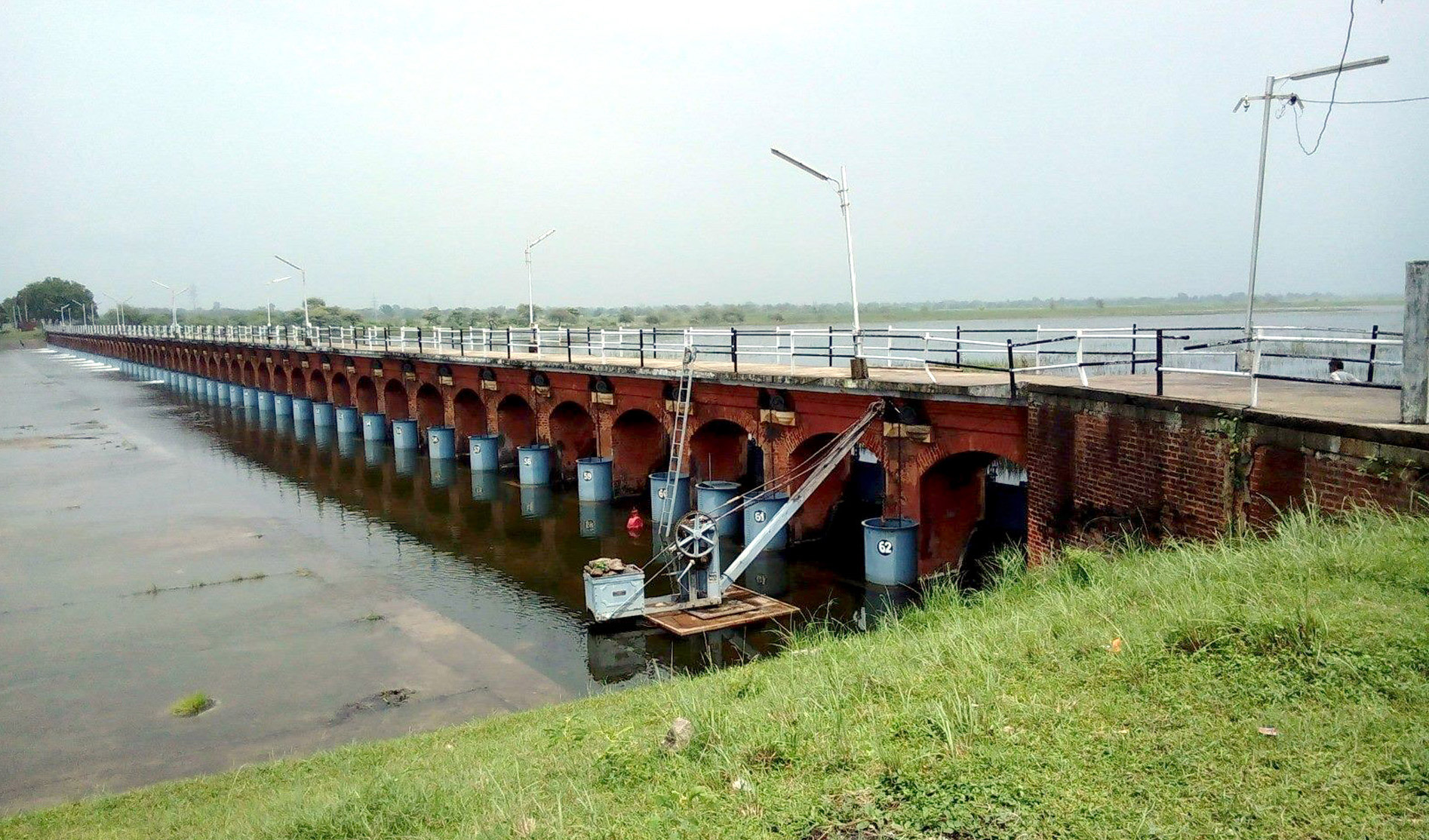
Kayavarohan
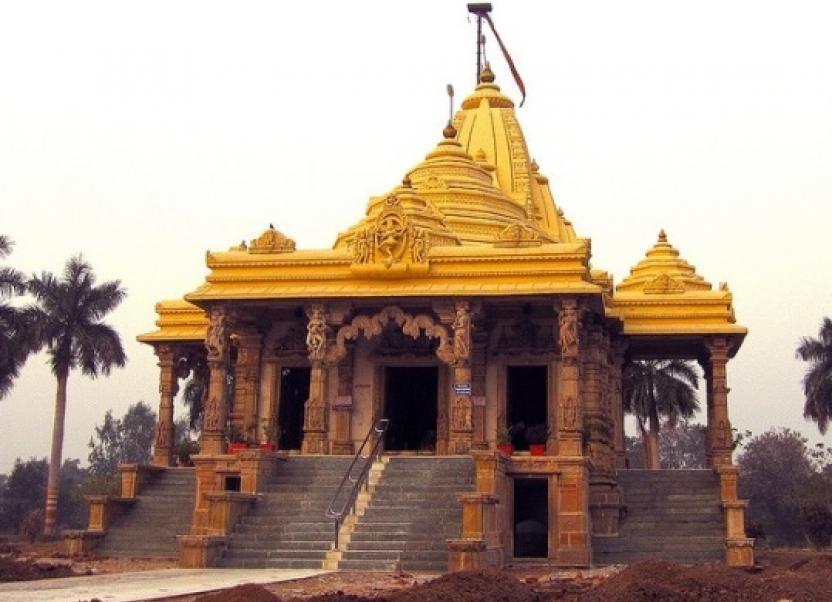
Popularly known as Karvan, it is situated on National Highway No. 8. It is both a place of pilgrimage and a picnic spot. A beautiful Shiv Temple built recently houses an attractive idol of Lakulish. Ancient sculptures and relics belonging to the 2nd century have been excavated from this historical place
Pavagadh
A mountainous place with the historical town of Champaner nearby. The town has beautiful mosques Juma Masjid and Shah-ki-Masjid built in early Mohamedan Era. It is 50 kms away from Baroda and accessible by bus and train.
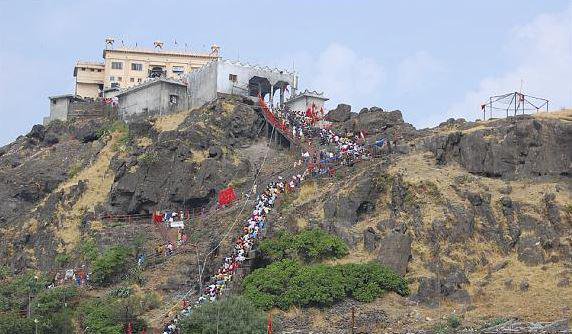
Rajpipla
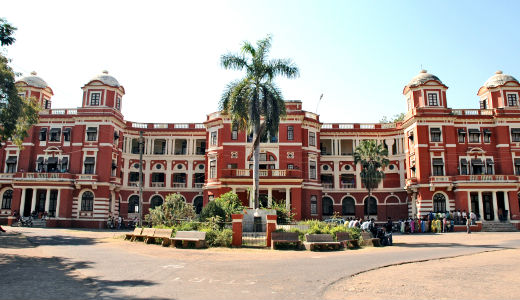
It is the second most important princely capital in Eastern Gujarat after Baroda. Rajpipla has a number of palaces including a majestic city palace now given over to the forest rangers.
Shukaltirth
Around 102 km north-west of Ahmedabad lies the town of Modhera. The Sun Temple in this town, built by Raja Bhimdev I, is a major source of attraction here. The Temple has been divided into three main compartments. The first is the Surya Kund, a fascinating massive rectangular stepped tank. The tank now stands dry, but in ancient times it was believed to be full of nirmal jal (holy water). Devotees on their way to offer prayers to the Sun God were required to first stop here for ceremonial ablutions. Several small steps from the Kund lead up to the enchanting
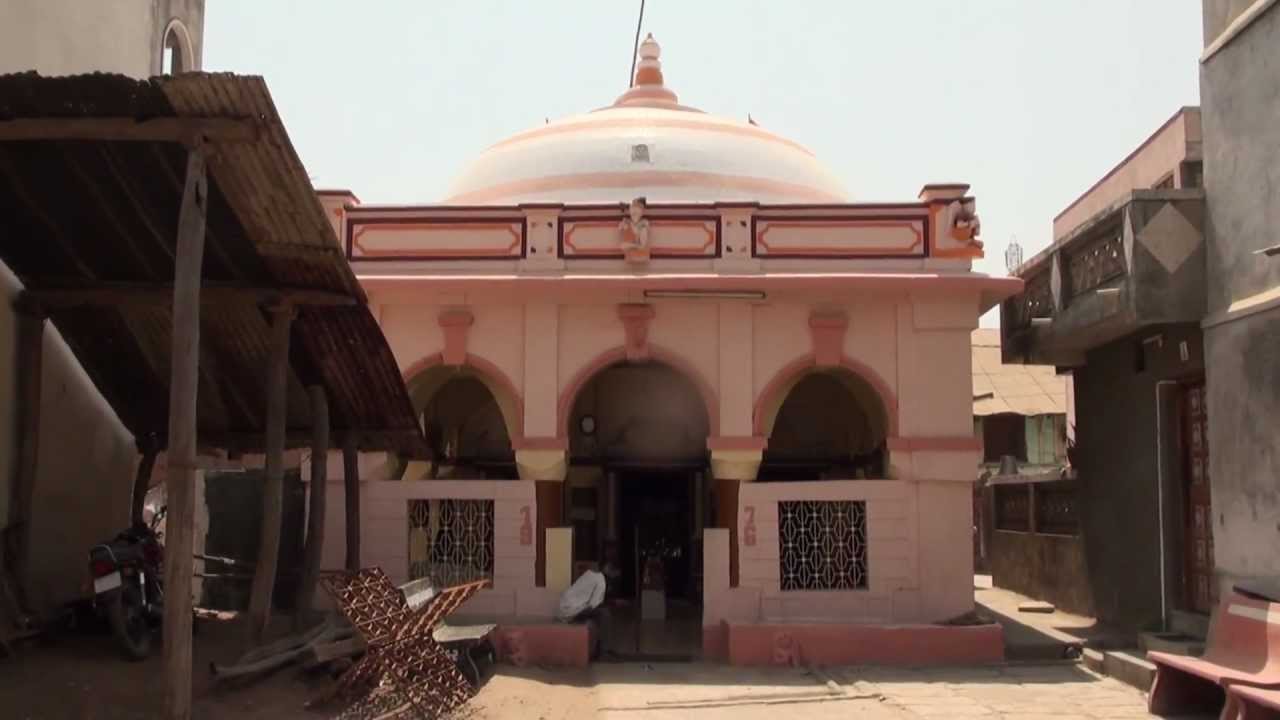
Legend surrounds the Vishnu temple here on the banks of the river Narmada. A fair is held every November in this pilgrim center, which is 89 km from Baroda.
Fact File
 Area: 365 sq. km
Area: 365 sq. km
 Population:19,25,891
Population:19,25,891
 Altitude: 158 m above sea level
Altitude: 158 m above sea level
 Best Time to Visit: October-March
Best Time to Visit: October-March
 Languages: Gujarati, Hindi and English
Languages: Gujarati, Hindi and English
 STD Code: 0265
STD Code: 0265




